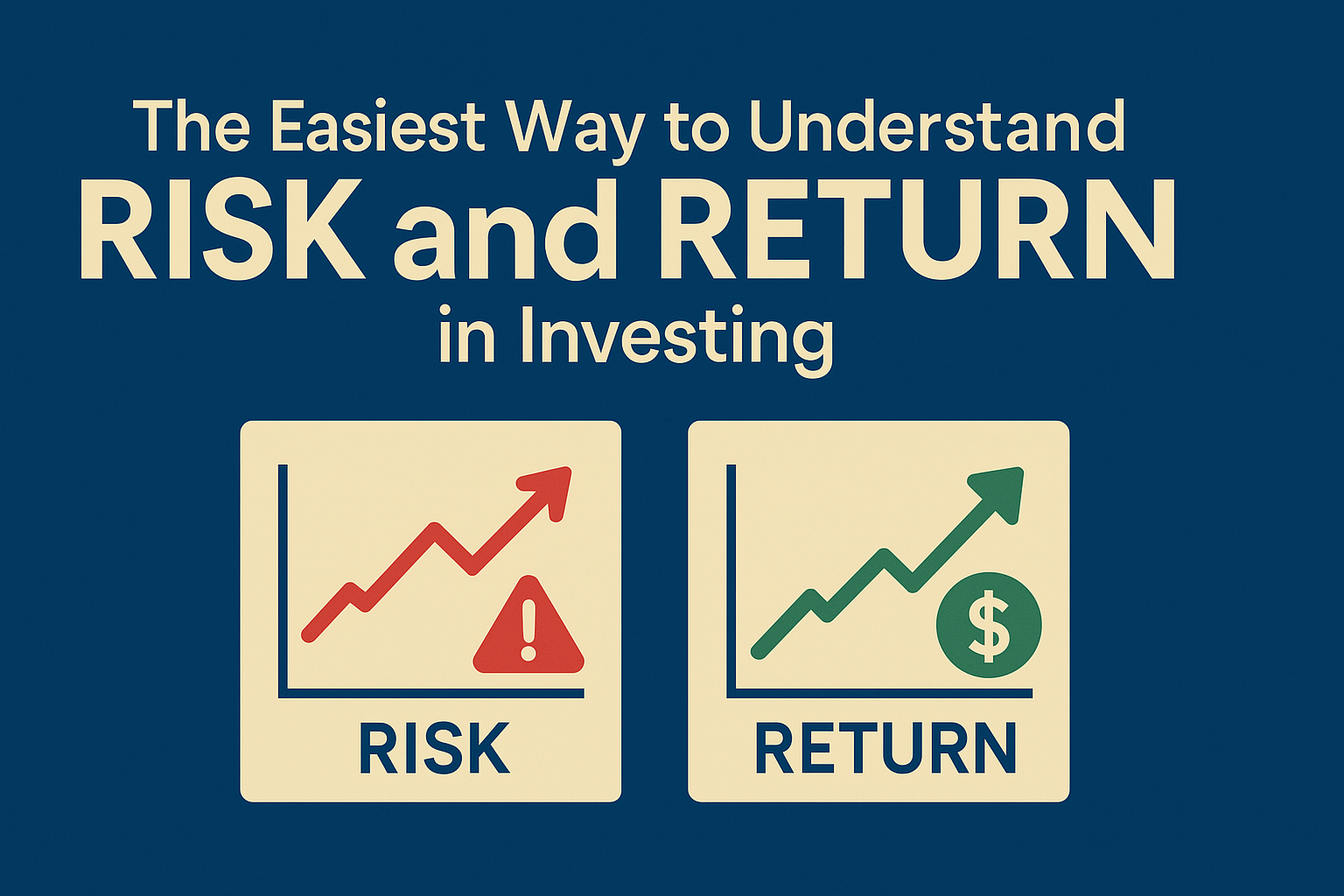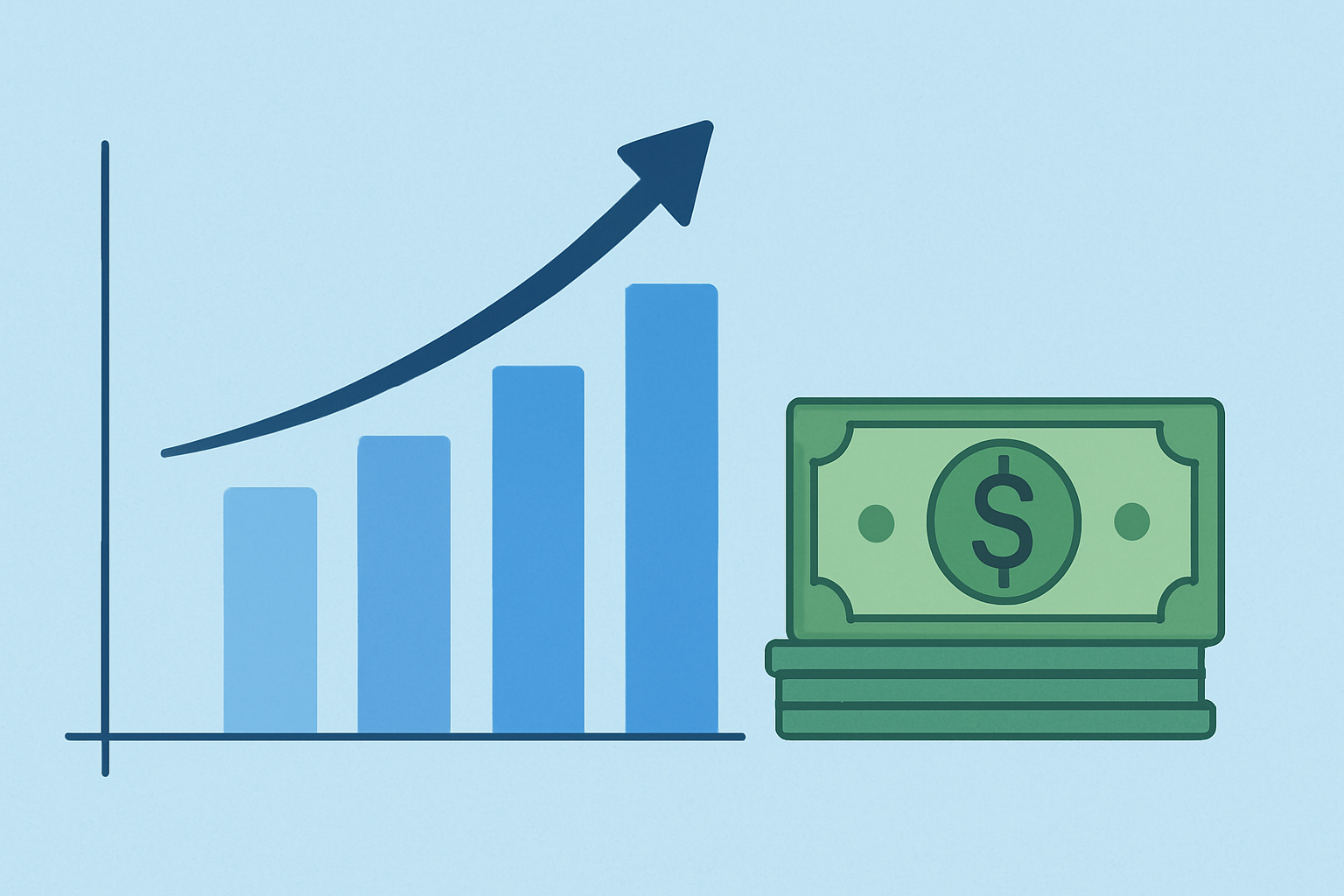If you’re new to investing, you’ve probably come across the phrase
“High risk, high return.”
But what does that really mean?
Understanding risk and return in investing is one of the most important things a beginner can do. It’s not just about making money — it’s about knowing how to protect it while helping it grow.
Let’s break it down in plain English — so you can invest with clarity and confidence, not confusion and fear.
What Is “Return” in Investing?
Return is the money you make from an investment.
It’s how much your investment grows over time — usually shown as a percentage.
Example:
You invest $1,000 in a stock. A year later, it’s worth $1,100.
You’ve made a $100 profit, or a 10% return.
Returns can come in different forms:
-
Capital gains—increase in the price of your stock or asset
-
Dividends—regular payments from certain companies
-
Interest—for bonds, savings, or CDs
What Is “Risk” in Investing?
Risk is the chance that your investment won’t perform as expected — or worse, that you could lose money.
In simple terms:
-
If you want higher returns, you need to accept higher risk.
-
If you want low risk, you usually get lower returns.
It’s like choosing between
-
A rollercoaster (stocks: exciting, risky, but potentially rewarding)
-
A slow train (bonds or savings accounts: stable, predictable, but slower)
The Risk-Return Tradeoff
This is one of the fundamental principles of investing.
| Investment Type | Risk Level | Potential Return |
|---|---|---|
| Savings Account | Very Low | 3–4% (APY) |
| Government Bonds | Low | 4–6% |
| Index Funds (S&P 500) | Medium | 7–10% average |
| Individual Stocks | High | 10–30% or more |
| Crypto/NFTs | Very High | ?? – High risk |
The higher the potential return, the higher the chances that things could go wrong.
Why Risk Isn’t Always a Bad Thing
Here’s the thing — risk is necessary to grow your wealth. If you avoid all risk, your money might feel “safe,” but inflation will slowly eat away its value.
For example:
-
A savings account may feel safe with 4% interest.
-
But if inflation is 3.5%, your real return is only 0.5%.
So, smart investing is about managing risk, not avoiding it completely.
Types of Investment Risks
Let’s make it even simpler — here are the most common kinds of risk:
-
Market Risk—The whole market drops (e.g., the 2008 crash or COVID-19 dip)
-
Company Risk—A specific company performs badly
-
Liquidity Risk—You can’t sell when you need the money
-
Inflation Risk—Your money loses value over time
-
Interest Rate Risk—Affects bonds when rates go up or down
How to Manage Risk as a Beginner
Here are easy, actionable tips to minimize your risk while still growing your money:
1. Diversify Your Portfolio
Don’t put all your eggs in one basket.
-
Spread your money across different stocks, sectors, and asset classes (like stocks, bonds, and real estate).
-
Consider ETFs or index funds — they automatically invest in hundreds of companies.
2. Start Small
-
Begin with a manageable amount. You don’t have to go “all in” on Day 1.
-
Use apps like Fidelity, Robinhood, or Schwab to invest in fractional shares.
3. Use Dollar-Cost Averaging
Invest a fixed amount regularly, no matter what the market is doing.
This strategy helps you:
-
Avoid emotional investing
-
Buy both highs and lows (averaging your cost)
-
Reduce timing risk
4. Know Your Time Horizon
-
Short-term goals (less than 3 years): stick to low-risk investments
-
Long-term goals (5+ years): you can afford to take more risk
5. Rebalance Annually
-
Check your portfolio once a year and adjust if needed.
-
For example, if stocks are now 80% of your portfolio and you’re more comfortable with 60%, shift some into bonds or cash.
Simple Risk Profile Quiz (Answer Honestly)
| Question | Option A | Option B |
|---|---|---|
| I feel nervous when my investments drop 10% | 😟 Yes | 😎 Not really |
| I’m investing for: | < 3 years | 5+ years |
| I prefer | Stability | Growth |
| I check the stock market. | Daily | Occasionally |
| I want to: | Preserve money | Grow money |
Mostly A’s? You’re a low-risk investor. Stick with bonds, index funds, and savings.
Mostly B’s? You’re okay with moderate to high risk. Explore stocks and ETFs with long-term goals in mind.
Historical Proof: Risk Pays Off (Eventually)
Look at the S&P 500 index — it tracks the 500 largest U.S. companies:
-
Despite short-term crashes (2000, 2008, 2020), it has averaged 9–10% annual return over the past 50 years.
-
Investors who stayed invested during downturns saw the biggest rewards over time.
-
Time in the market beats timing the market.
Final Thoughts
Understanding risk and return isn’t just for Wall Street pros. It’s the foundation of smart investing for anyone — even if you’re starting with just $50.
Here’s the easiest way to think about it:
Risk is the cost of entry. Return is your reward for being brave.
Be informed. Stay consistent. And choose investments that align with your comfort level and future goals.





I will immediately take hold of your rss feed as I can not find your email subscription hyperlink or newsletter service. Do you’ve any? Please permit me realize so that I could subscribe. Thanks.
whoah this weblog is wonderful i really like reading your posts. Keep up the great paintings! You know, a lot of persons are searching around for this information, you could help them greatly.